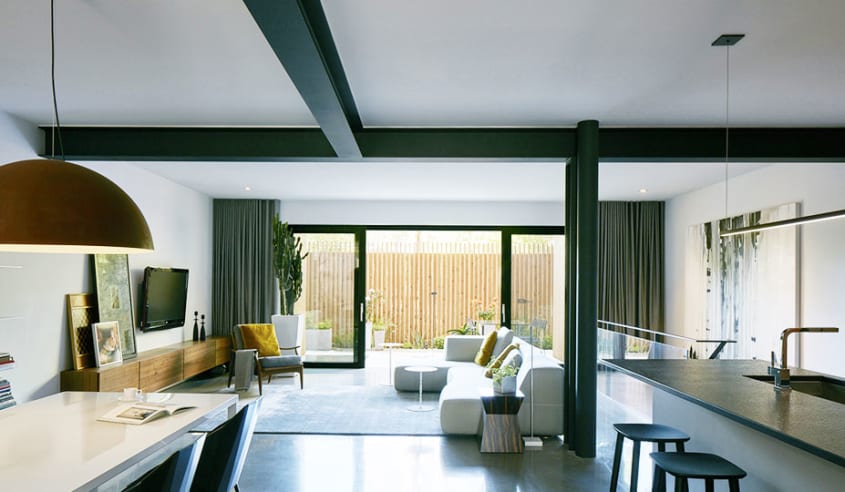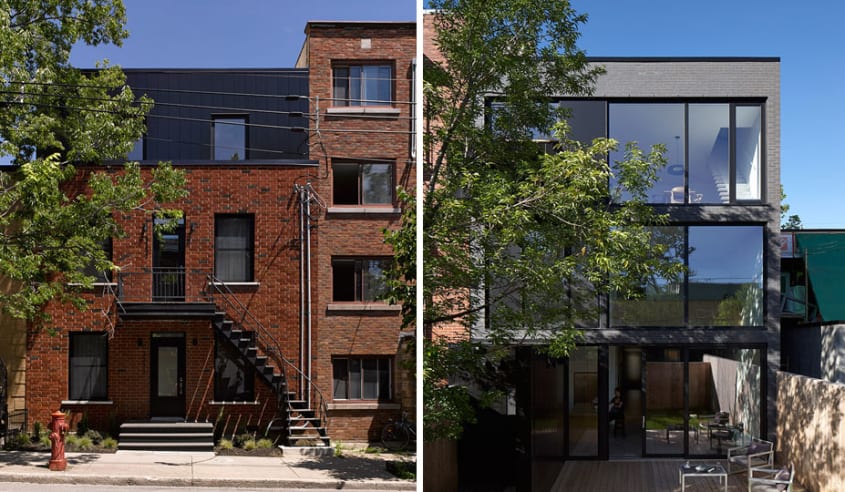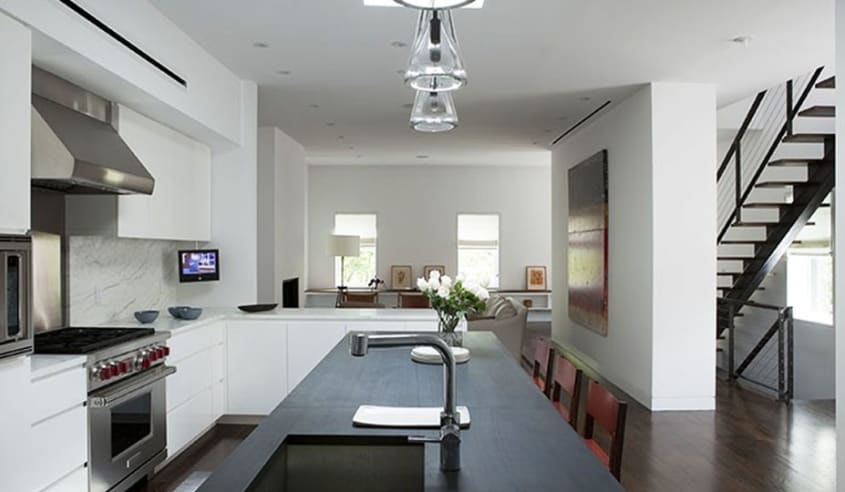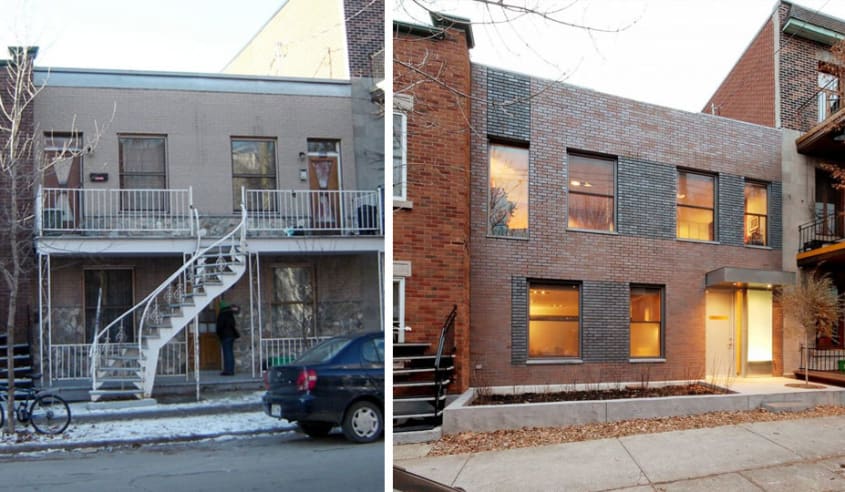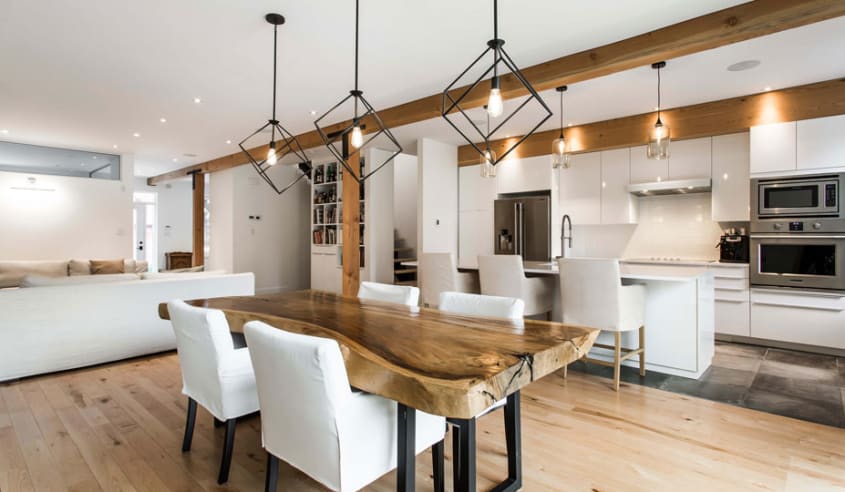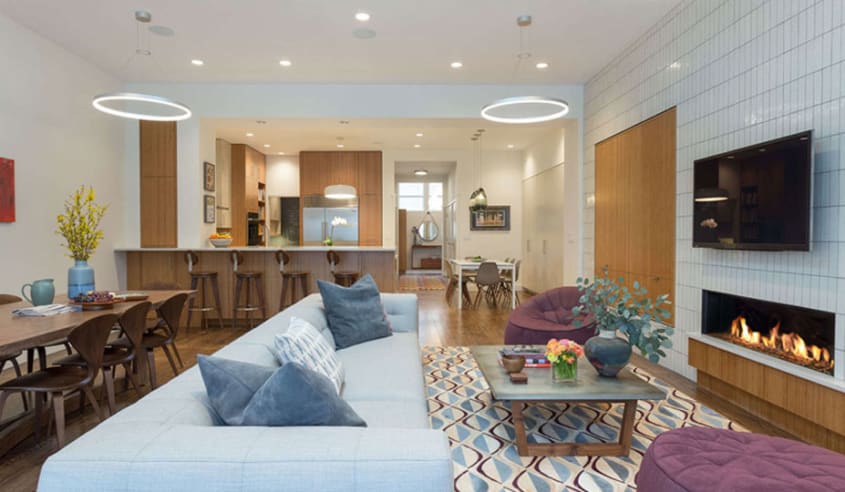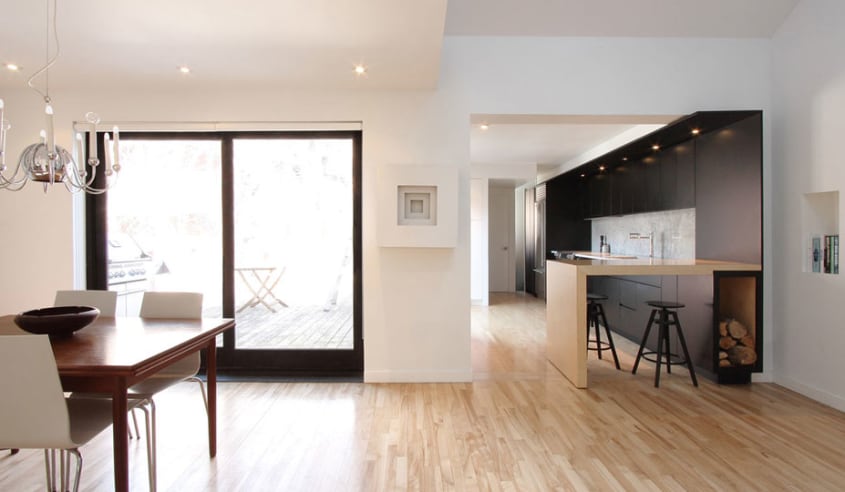Are you considering turning a duplex or triplex into a single family unit? If so, you’re not alone. Converting a building to a single family home can be a rewarding undertaking that allows you to live in the customized home of your dreams. Here, we’ll walk through the necessary steps: from zoning permits, construction, and finding the right contractors to meet your needs.
What to Consider When Converting Your Space
The first step to take when converting a duplex or triplex into a single-family home is determining the new layout. This will require some careful planning and research in order to determine the best blueprint for moving forward.
For instance, it’s likely that each floor of the building contains a kitchen, living space, multiple bedrooms, and at least one bathroom. In order to renovate, you’ll need to figure out where you’d like your kitchen to be and remove the others (in most buildings, that kitchen will be on the first floor). After finding out what needs to be changed and where, you will draw up new plans for what you want the home to look like. Re-designing the layout of your home and moving bathroom(s) and kitchen(s) will require you to consider plumbing and electrical work, and moving your ventilation system (HVAC). Typically, a single-family home’s layout includes a kitchen, a living room, dining room and bathroom on the main floor, while the upper floors hold bedrooms, another bathroom, and additional living areas.
Special considerations for this type of renovation include remodeling the foyer and individual entryways by removing them and rebuilding according to the new design. You’ll also have to take into account removing and rebuilding the staircases. You might want to simply remove the staircases and keep the balcony. Finally, removing non-load bearing walls within the dwelling will require you to determine the placement of electric and plumbing systems, as well as heating systems in some instances. Note that while it’s possible to remove the walls and drywall with minimal damage to the existing ceiling and flooring, it may be necessary to update or remove these after the walls have been taken down. For load bearing walls, however, you’ll need the help of a structural engineer. It’s important to get their guidance before removing any structural elements, whether they be load bearing or not.
In order to make these changes, it can be extremely helpful to reference records of the building’s original layout in order to determine what additions have been made, and where. These records can be obtained from the city. Toronto residents, for instance, can request access to building records here. Once you’ve consulted the original blueprint, it will be easier to determine what changes are feasible.
After you’ve come up with the vision for your new home, you’ll need to produce clear, professional blueprints. These can’t be just sketches: the city is going to ask for them in order to approve your permits,. Plus, they’ll need to be done by a a structural engineer and/or a professional architect or technologist (all depending on the circumstances).
Permit Requirements
Renovating your home will demand several permit requirements. At the least, you’ll be changing the electrical and plumbing, which will require a building permit. Check with your city to see if you can apply for a preliminary zoning review to determine whether your building complies with zoning permits before requesting your building permit. This isn’t a necessary step, but it can speed up the paperwork process.
You will also want to research your zoning bylaws. This work will ensure that all the changes you want to make are legal, including the most obvious change of converting a duplex or triplex into a single family home. The renovation will remove the number of dwellings in the neighborhood, and zoning laws require a certain number of residencies to be available.
Think of applying for permits ahead of time seeing as, depending on the time of year, delays can occur & they can last several months. For instance, if you plan on getting the work done in the spring, applying prior in the fall wouldn’t be a terrible idea. Delays can happen for a number of reasons, including omitting a particular document. Also, if your project does not comply with local zoning bylaws, you may be able to apply for relief from zoning requirements. Check with your city to see what the process is in this scenario. If you live in Toronto and your house is on the Heritage Register, that will require special approval as well. The same is likely to apply in other cities with heritage registers.
Depending on where you live, permits and grants vary. Some cities allow you to apply for them directly online. Find the application forms for your city here:
Finally, be sure to see if you qualify for any grants. These are available for a variety of causes. In Canada, for instance, you may be able to receive a grant if you’re a first time home buyer, are renovating for home efficiency, or a new housing rebate for a substantially renovated house.
Is There a Financial Benefit?
When it comes to talking numbers for converting a multi-dwelling unit into a single family home, there are no hard and fast rules. Generally speaking, you will stand to gain if the housing prices in your area have increased faster than rental prices. But the cost of the renovation, coupled with the fact that you won’t be leasing to sub-tenants, means you may stand to break even or even lose money. Most people will find that the real pay-off for the renovation comes in having a customized home outfitted exactly how they wish. Either way, you’re going to have to make sure that your budget has a cushion to account for unforeseen costs.
What Kind of Contractor Should You Hire?
Hiring the right professional can make or break the difference between a smooth, well thought out renovation and a hair-raising one. At the least, you’re going to need a designer, architect or structural engineer to draw up the new plans. Your contractor might have the right professional on their team to help you out. After finalizing the new design and obtaining the right permits, you will need a contractor who can oversee the plumbers, electricians, and all other sub-contractors. We can help you find the right contractor for the job. Our Renovation Advisors can help you obtain the right permits, provides you with reliable quotes and estimates, and troubleshoot potential obstacles before the project starts.
Considering the many moving parts with converting a multiple dwelling unit into a single family home, it’s essential to find the right contractors for the job. It’s possible to hire a general contractor to oversee the process from start to finish. Your ideal contractor will have experience drawing up the new design or know architects or designers who can, know how to access the building’s history, be familiar with the permit requirements, and know the perfect plumbers, electricians, and carpenters.
Ready to get started?
RenoAssistance is here to help you find up to three Verified Contractors to bid on your project, for converting a duplex or triplex into a single family home. Fairly priced quotes with no obligation means you can get started on your dream home today. Appelez-nous or fill out this form to get started!


